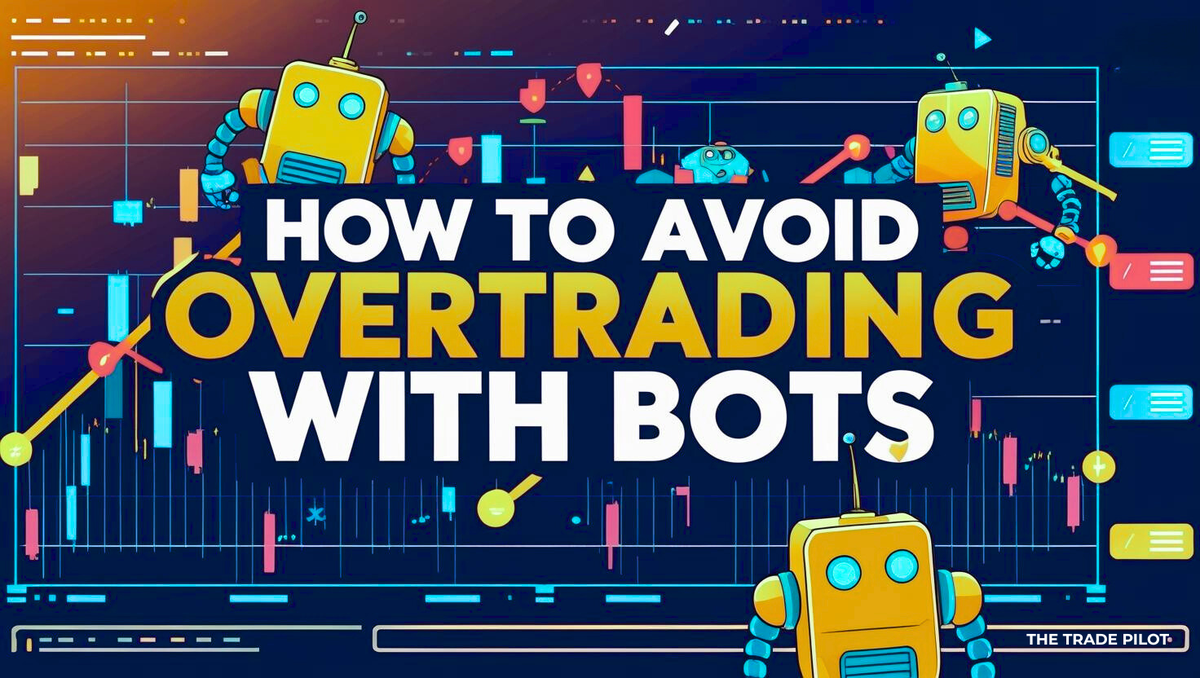Bots are powerful tools, but without proper limits they can lead to overtrading, losses, and emotional stress. Learn how to keep your strategy smart and sustainable.
Introduction
Trading bots like The Trade Pilot are designed to automate your crypto strategies, making it easier to enter and exit trades without emotional bias. However, automation doesn’t automatically mean optimization. Without proper planning and controls, bots can fall into the trap of overtrading—executing too many trades in short periods, often based on small, insignificant price changes.
Overtrading can drain your funds, rack up fees, and increase emotional stress when strategies fail to perform. In this article, we’ll explore what causes overtrading in bot-driven systems, how to recognize it, and what steps you can take to prevent it.
What Is Overtrading?
Overtrading happens when a trader—human or bot—executes trades too frequently, often reacting to short-term price movements rather than a sound strategy. In the world of crypto bots, this can happen if your strategy is too aggressive, your rebuys are triggered too easily, or you fail to define clear profit-taking and loss-cutting rules.
Why Bots Can Overtrade
Even though bots eliminate emotional trading, they don’t eliminate poor configurations. A bot will do exactly what you tell it to do, so if your strategy has flaws or lacks boundaries, it can lead to:
- Too many trades in a short time
- Trading based on noise instead of trend
- Excessive rebuys or sell signals
- Rapidly depleted funds without real gains
Common Mistakes That Lead to Overtrading
- Overly Sensitive Triggers: Setting a rebuy trigger at a 0.5% price drop or even lower will cause the bot to trade on nearly every fluctuation.
- No Cooldown or Time Spacing: Without a time interval between trades, bots may execute multiple rebuys or sells in seconds.
- Unlimited Rebuys: Not limiting the number of rebuys can exhaust your funds quickly, especially in volatile markets.
- No Take Profit or Exit Strategy: Bots can keep entering new trades without ever realizing gains if there's no clear rule to close positions.
- Using the Wrong Strategy for Market Conditions: For example, applying a Grid strategy in a strongly trending market or a DCA in an extremely volatile coin.
How to Prevent Overtrading with Bots
- Use Wider Triggers: Don’t set rebuy or sell triggers too close to the market noise. Allow some room for natural price movement.
- Set Maximum Rebuys: Always define how many times your bot can rebuy to avoid endless accumulation.
- Adjust Take Profit Levels: Make sure the bot has clear goals for closing positions. You can set Take Profit to a realistic percentage based on your asset’s behavior.
- Implement Time Intervals: Especially for DCA, using time-based rebuys (e.g., once a day) ensures trades are not triggered too frequently.
- Monitor and Analyze: Check your bot’s trading history. If you see dozens of trades with tiny or no returns, it may be time to revise your configuration.
- Disable Auto-Rebuys When Needed: If you’re unsure, start with manual rebuys to better understand how your setup behaves.
Choosing the Right Strategy
Each strategy—DCA, Grid, swing, or momentum—has its ideal use case. Avoid using advanced strategies if you're not familiar with their behavior. For example, a Grid strategy with small price intervals and high multipliers is more likely to overtrade unless carefully planned.
The Role of Emotions in Overtrading
You may think bots are immune to emotions—but your setup isn’t. Often, overtrading happens because users fear missing out, try to recover losses quickly, or become impatient. These emotional drivers reflect in how bots are configured.
Conclusion
Automated trading can be a powerful ally, but only if used with care. Overtrading not only reduces profitability—it introduces unnecessary risk and stress. Make sure your bot operates under a disciplined plan, with clear limits and realistic expectations.
Take the time to test and tweak your strategies. A well-configured bot is not one that trades the most, but one that trades the smartest.

